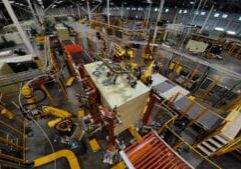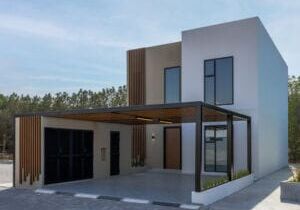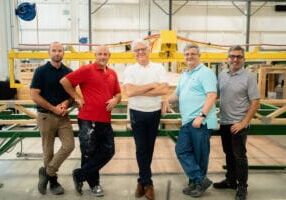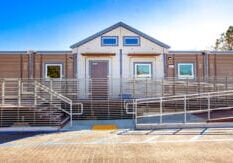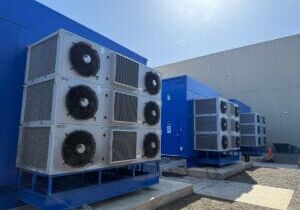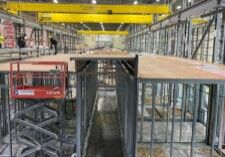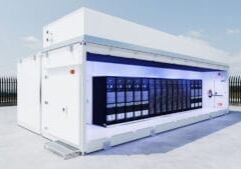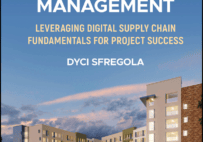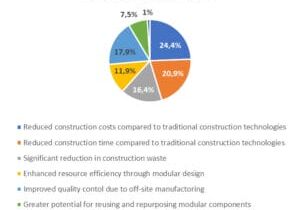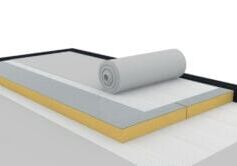DORCE Designs and Exports Volumetric Modular Buildings to 6 Continents
DORCE offers “Convertible and eco-friendly” volumetric modular steel structures
Today we witness “convertible and eco-friendly” volumetric modular buildings stand out in industrialized construction with new construction technologies, new construction methods, and innovative materials, unlike those used in traditional building systems.
Prefabricated modular building elements offer high-quality projects with lower costs and optimized & accelerated construction programs. The concepts such as Design for Manufacturing and Assembly (DfMA) & Designing for Industrialized Methods of Construction (DIMC) constitute the most basic and modern elements of Off-site construction and Modern Methods of Construction (MMC).
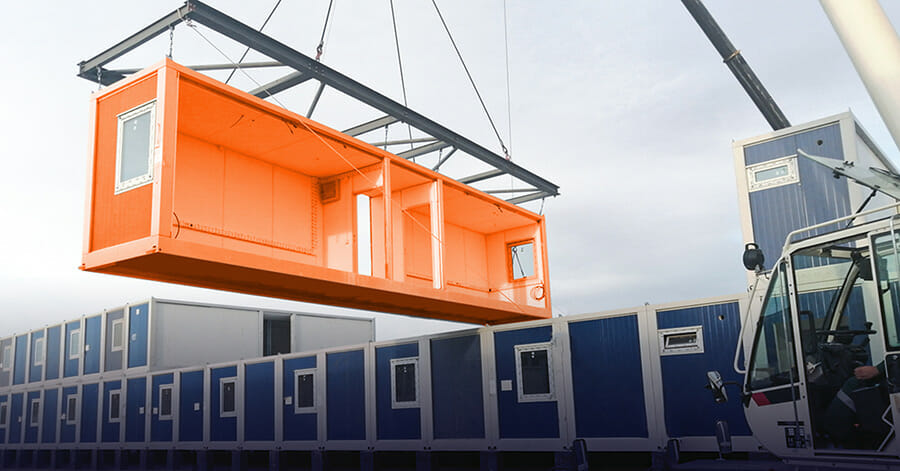
Demand has been increasing in sectors such as education, entertainment, health services, and housing
Mobile life offers fast and practical solutions with prefabricated modular structures to all the sudden and changing needs of people far away from their homes in the most severe climatic conditions. Stable architectural solutions used in built-in building systems have
begun to be replaced seriously by modular building systems. Demand for modular building systems has been increasing day by day in many areas of our lives such as education, entertainment, health services, and housing.
In general, modular building systems can be classified as permanent and mobile modular buildings.
Permanent modular buildings
Permanent modular buildings include schools, hospitals, shopping malls, clinics, residences, housing units, vehicle inspection stations, police stations, warehouses, hangars, administrative buildings, office buildings, hotels, and dormitories.
Mobile modular buildings
Mobile modular buildings include caravans, trailers, tiny houses, modular containers, temporary emergency & disaster facilities, integrated refugee facilities / camps, worker accommodation camps, labour quarters, and mobile hospitals.
Volumetric modular buildings of DORCE can be used as a traditional accommodation as well as temporary – volumetric modular accommodation in disaster and war zones; they are also used as temporary residential camps or permanent accommodation facilities at construction sites, oil & gas, mining, drilling, offshore and pipeline sites.
Related Reading:
Advantages of Digital Prefabrication for the Modern Construction Industry
DORCE Prefabricated Building & Construction Industry Trade Inc. manufactures prefabricated modular building components directly with Building Information Modeling (BIM) and completes their assemblies completely digitally off-site.
This article details all the benefits realized through digital prefabrication and shows how other manufacturers can capitalize on this popular method of project deisgn.
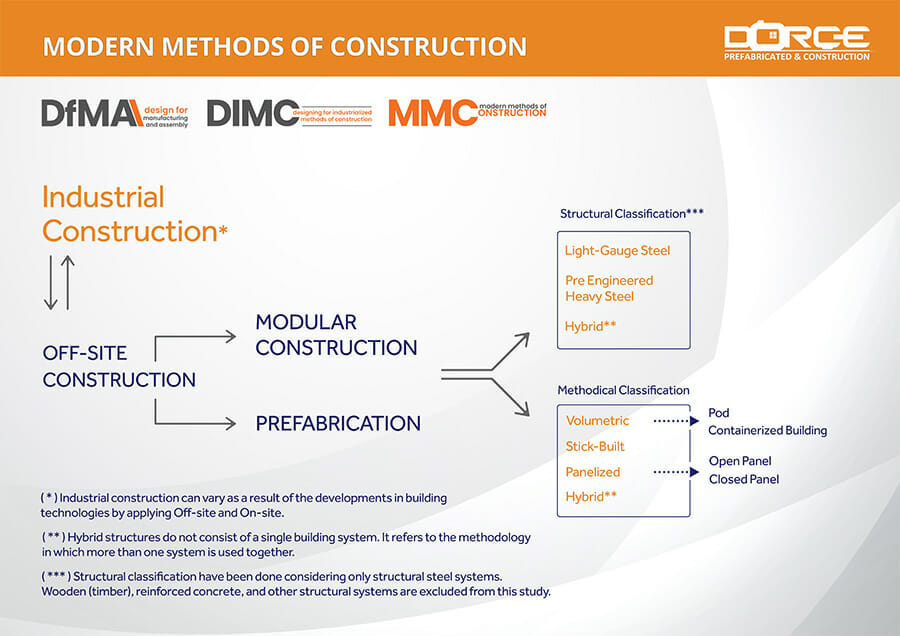
Modular units manufactured in a controlled environment
Modular building systems, manufactured by DORCE, are used for projects that require rapid solutions and must be completed in harsh climatic and geographical conditions. The component of modular buildings manufactured in a controlled environment at the industrialized facility (factory conditions) and transported to the construction site as units and assembled at the place.
DORCE completes staff accommodation facilities in Kazakhstan with volumetric modular building system
Last year, DORCE has successfully completed construction of Copper Mine Staff Accommodation Facilities within the scope of the Aktogay Expansion Project in Kazakhstan.
Pre-manufactured containerized modular units are manufactured at the Dorce production plant in Turkey, delivered as flat-packed and each module is assembled at Dorce workshops in Kazakhstan. Thereafter, modules delivered to the site in Aktogay and erected side by side and stacked to create a complete structure.
The connection of all modular buildings is done at the construction site. They are immediately made weathertight to protect the interior and interconnected structurally. The finishes and mechanical connections are completed, and all systems are inspected and tested. Custom features such as site applied finishes, pitched roofs and other architectural treatments can be added to make the building a customized structure, ideally suited for its specific use.
10 modular buildings with 1,628 modules in total
Finally, the entire structure composes of 10 modular buildings consisting of 1,628 modules in total.
Building modules are demountable, transportable, and designed to allow an easy dismantling and erection for several times. Volumetric modular buildings of DORCE are designed to be assembled on the reinforced concrete columns with anchorages above the ground level.
Off-site construction at -40 degrees climate conditions
These types of building systems allow the rapid formation of larger interior volumes and larger structures by coming together of modules as volumetric structures. Copper Mine Accommodation Facilities Project of DORCE in Kazakhstan – Aktogay was completed with “volumetric” building systems in -40 degrees climate conditions.
Volumetric modular building systems offer plenty of advantages
The advantage of this method is that all conditions are under control since the manufacturing process takes place in the factory environment. Thus, the quality of the produced materials increases. Fire, sound, and thermal insulation can be made as desired and accordingly with the requirements of projects and customers. In addition, this Modern Method of Construction (MMC) saves time.
Volumetric modular construction provides many advantages to people as a part of today’s modern living spaces and offer practical solutions in accordance with the changing needs of people. Volumetric modular buildings are permanent or temporary structures that can be equipped with high-level technology, meet their own needs, even solve their sub-structural needs such as energy recovery and waste recycling. They are lightweight, easily assembled and disassembled and transportable from one location to another.
More from Modular Advantage
Resia: Breaking All the Rules
Resia Manufacturing, a division of U.S.-based Resia, is now offering prefabricated bathroom and kitchen components to industry partners. Its hybrid fabrication facility produces more precise bathroom and kitchen components (modules) faster and at lower cost than traditional construction. Here’s how Resia Manufacturing does it.
How LINQ Modular Innovates to Bring Modular To The Market in the UAE and Beyond
LINQ Modular, with an office and three manufacturing facilities in Dubai, is a modular firm based in United Arab Emirates. The company is on a mission: to break open the housing and construction markets in the Gulf Cooperation Council (GCC) area with modular.
ModMax: Redefining Modular Construction with Confidence and Precision
ModMax was born out of frustration—frustration with five persistent pain points in modular construction: Permitting bottlenecks. Production delays. Rigid designs. Disconnect between “the office” and the field. Lack of transparency and communication.
LifeArk: Disaster-Resilient Housing from Recycled Plastic and 100-year-old Technology
Wee compares LifeArk’s housing units to Yeti coolers, as they are built similarly. Each component takes 15 to 20 minutes to manufacture, has an R-value of 40, and includes molded slots and chases for wiring, plumbing, fire sprinklers, and other utilities.
Building the Future of Modular Edge Infrastructure
The edge data center market is expanding rapidly, driven by the surge in AI workloads, IoT adoption, and the need for localized compute power. In these environments, sustainability, scalability, and reliability are non-negotiable. Cooling is among the most complex challenges for operators—and one of the most decisive factors in long-term success.
Accelerating Light-Gauge Steel Construction: A Semi-Automated Digital Workflow for Off-Site Projects
For construction professionals, the message is clear. By adopting semi-automation and digitalization, companies can deliver projects faster, more accurately, and more profitably, while also building stronger collaboration across teams. The approach is not about replacing people with machines, but about empowering people with better tools and processes.
Why Modular Data Centers Are Gaining Momentum
Artificial intelligence, high-performance computing, and edge applications push the limits of traditional “stick-built” data centers. They take years build, often struggle with high density workloads, and aren’t optimized for deployments near end users. Modular data center platforms are purpose-built to address these challenges, offering flexibility and scalability to adapt to evolving technologies, while opening new opportunities for the modular construction industry.
Supply Chain Innovation in Action: 5 Habits Every Modular Leader Should Practice
By applying these principles to supply chain practices — collaborative planning, strategic procurement, scenario modeling, digital tools, and transparent forecasting — construction leaders can build value chains that are not just efficient and agile, but truly innovative.
Exploring the Role of Modular Integrated Construction (MiC) in Advancing Circular City Principles – A Survey of Stakeholder Perspectives
The survey findings highlight the significant potential of Modular integrated Construction (MiC) in advancing the development of circular cities. By reducing costs, accelerating construction timelines, and minimizing waste generation, MiC offers a promising approach to sustainable urban development.
The Use of MS POLYMER™-Based Sealants and Adhesives in Modular Building
These products combine flexibility and elastic recovery with excellent adhesion to different substrates and have already shown their usefulness in traditional construction. Now it’s time for them to be put to use in the modular construction industry.

